Overview
EpiAlveolar is a 3D co-culture model of the air-blood barrier. EpiAlveolar is an in vitro model system made from primary human alveolar epithelial cells, pulmonary endothelial cells, and fibroblasts that was designed to simulate human-relevant biological responses.
Ready-to-use EpiAlveolar kits are delivered to the customers in a standard 12-well transwell format and have 24 tissue inserts, maintenance medium, and protocols. EpiAlveolar is used in:
- Toxicology and inhaled product safety assessment investigations
- Disease modeling (i.e., fibrosis)
- Host-pathogen interaction studies and antiviral therapeutic screening
- Drug delivery and drug development research
Technology

Image Credit: MatTek
When primary alveolar epithelial cells, pulmonary endothelial cells, and fibroblasts are differentiated using a variety of specialized media, epialveolar tissues are formed on cell culture inserts. The squamous epithelium of differentiated EpiAlveolar tissues is composed of Type I and Type II alveolar epithelial cells grown with extracellular matrix creating pulmonary fibroblasts and endothelial cells.
The epithelium has functioned with tight connections and a strong barrier that remains stable during 30-day trials.
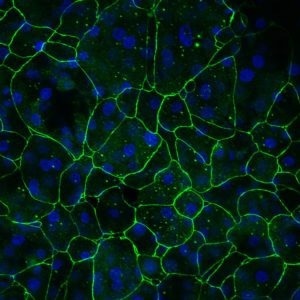
Top view confocal image of EpiAlveolar. Tight junction marker Occludin (green) and nuclei marker DAPI (blue). Image Credit: MatTek
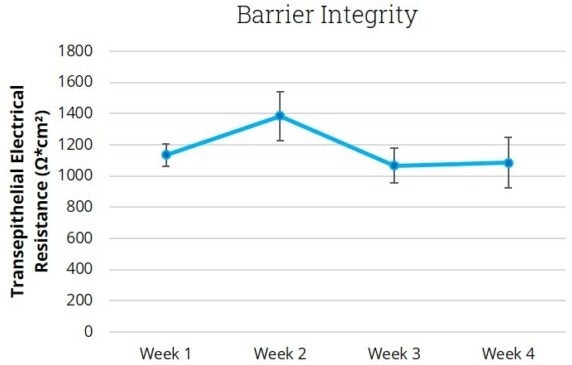
Image Credit: MatTek
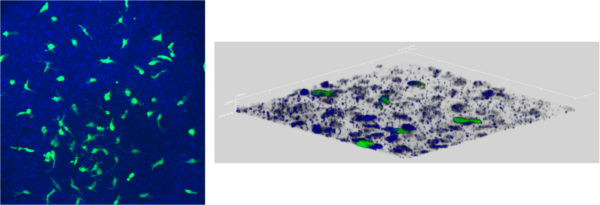
EpiAlveolar co-culture with THP-1 macrophages, (ALV-100-FT-MAC-PE12). Image Credit: MatTek
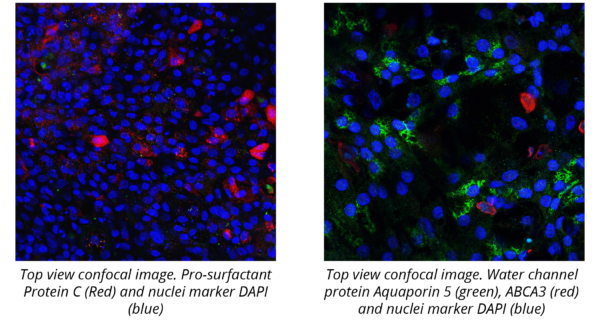
Image Credit: MatTek
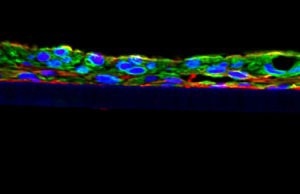
Cross-sectional confocal image. Epithelial cell marker cytokeratin 19 (green), fibroblast marker Vimentin (red) and nuclei marker DAPI (blue). Image Credit: MatTek
The PETA International Science Consortium contributed funds to the development of EpiAlveolar.
Applications
The EpiAlveolar 3D human tissue model is commonly used for a variety of applications such as safety and risk evaluation, inflammation and fibrosis, and drug delivery. Scientists can collect data in days rather than weeks or months because of simple techniques and the examination of early cellular endpoints.
- Inhalation toxicology: EpiAlveolar can be used to determine the relative safety and toxicological potential of inhaled substances
- Disease modeling
- Drug development
- Host-pathogen interaction